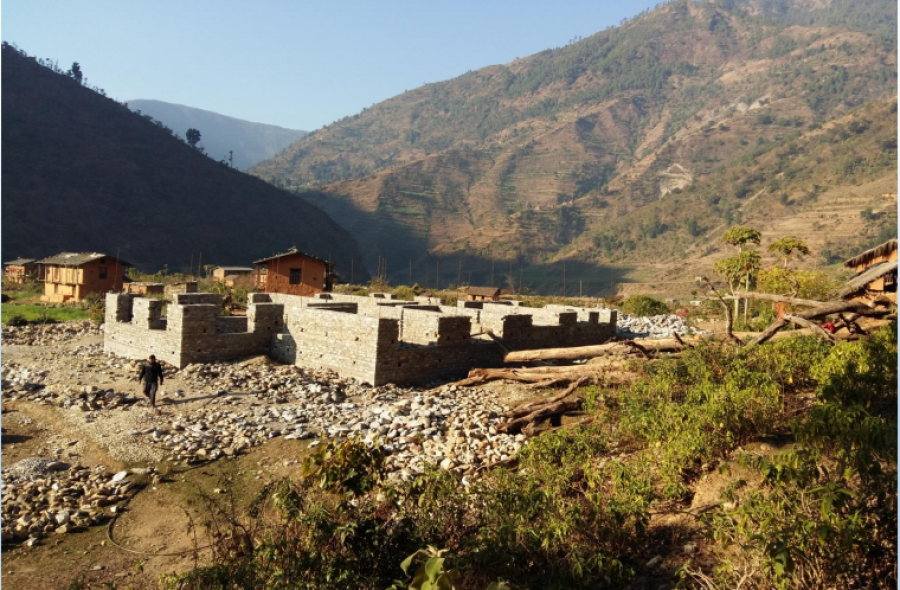Money
Talks over funding modalities for Nalsing Gad project revive
The Japan International Cooperation Agency has proposed to provide a $500 million soft loan to build the 410 megawatt scheme.
Prahlad Rijal
A year ago, the Japanese lender had shown interest in funding the 410 megawatt project identified in 2001 as a scheme with strong economic indices and favourable technical aspects.
“A seven-member delegation led by Energy Minister Barsha Man Pun is scheduled to hold interactions with Japanese politicians and investors including Japan’s power giants Fuji Electric and Kansai Electric Power regarding investment in the project,” said Gokarna Raj Panta, deputy spokesperson for the Energy Ministry.
In July last year, officials of Nalgad Hydropower Company, a subsidiary of state-owned Vidhyut Utpadan Company, had held a series of talks over financing the $1 billion project through concessional loans and commercial funding.
An official close to the situation said that the Japanese lenders had asked Nepali officials to bring a Japanese developer as a partner to the state-owned company under a public-private partnership model to execute the project. The project's expected payback period is 12.18 years, slightly higher than that of the proposed Budhi Gandaki reservoir scheme.
According to Nalgad Hydropower Company, the Japan International Cooperation Agency had proposed to provide a $500 million soft loan at 0.1 percent interest a year ago, but an official agreement is yet to be finalised.
The visit by high-ranking Nepali officials comes at a time when a joint venture of SMEC/Australia-MWH/USA-Udaya Consultancy/Nepal is finalising an updated detailed project report for the storage type project.
“The contractor was scheduled to submit the updated project report by May 2019, but it asked for a deadline extension saying that it was fine tuning the study and was close to finalising it,” said Panta.
The construction of crucial infrastructure around the reservoir, an embankment and a portion of the access road to the dam site has been concluded while land acquisition is underway.
As per a 2012 study, the project can churn out 1,406 gigawatt hours of electricity annually and 643 gigawatt hours of energy in the dry season, making it an attractive project for meeting the seasonal peak demand of the Integrated Nepal Power System and ensuring regional power system balance in the country's western grid.
The scheme will have a 200-metre-high rock dam 9 kilometres upstream from the confluence of the Nalsing Gad and Bheri rivers. The planned reservoir will inundate 315 hectares of private farm land and 489 hectares of public land including forests. The 2012 feasibility study shows that 588 households will have to be relocated.
According to the state-owned developer, the Nalsing Gad Storage Project will cause little disruption in terms of rehabilitation and resettlement compared to other storage-type projects of a similar size because the construction site is sparsely settled, and the reservoir will only occupy a small area.
However, the project will result in loss of river continuum, water level fluctuations at the downstream reaches and slope instabilities including erosion.
Nalgad Hydropower Company plans to convey water from the Nalsing Gad reservoir into an 8,215-metre-long headrace tunnel before channelling it to four underground turbines with an installed capacity of 102.5 megawatts each.
The power generated by the Nalsing Gad plant will be evacuated through a 112-kilometre-long 400 kV transmission line with an interconnection point at Kolhapur substation.
Although the construction of the storage project was expected to begin in the fiscal year 2017-18 and end by fiscal 2022-23, it was delayed due to disputes over the contractor selection for the detailed project report and the government's decision to scrap the Nalsing Gadh Development Committee to put the project in its basket.
Among the 93 potential storage projects identified during 1999-2001, the Nalsing Gad Storage Project, facilitated by Investment Board Nepal and showcased at the Investment Summit, has a financial rate of return of 8.9 percent, higher than for other proposed storage projects.




 11.12°C Kathmandu
11.12°C Kathmandu














